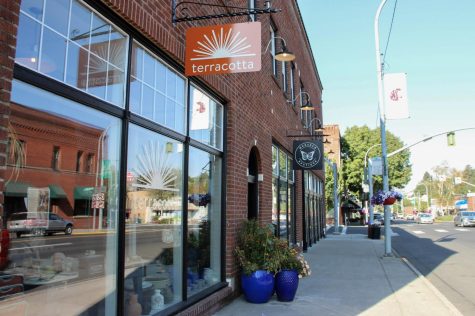The ins and outs of emergency birth control
March 3, 2017
Accidents happen. Emergency contraceptives are here to help repress the repercussions.
Plan B and ella are two different emergency contraceptive pill brands, both of which perform the same task in nearly the same way.
Plan B’s active ingredient is levonorgestrel, which prevents pregnancies by hindering ovulation, if the patient has not already ovulated, according to the Planned Parenthood website.
“Plan B helps protect you for up to 72 hours, so the sooner you take it, the better,” the website states.
In the event that the patient has already ovulated, it also works by preventing the attachment of a fertilized egg to the uterine wall, according to the Medline Plus website.
Side effects with the use of Plan B are uncommon, but may include alterations in the patient’s next period, according to the Planned Parenthood website. It may come earlier or later than typical and be heavier, lighter or spottier.
Because Plan B is an over-the-counter drug, so it can be purchased from any pharmacy, such as Rite-Aid, Planned Parenthood or the Health and Wellness Center on campus.
Ella is another emergency contraceptive; however, it is not an over-the-counter drug, so a prescription is necessary. Its active ingredient is ulipristal acetate, according to the FDA.
Ulipristal acetate performs the same function as levonorgestrel, but the effective window is longer, and its hormone is stronger, according to the Planned Parenthood website.
After taking ella, it is normal for the next period to be different than what’s normal, according to the Planned Parenthood website.
Planned Parenthood carries both forms of emergency contraceptive, according to the Planned Parenthood website.
Side effects are rare with the use of ella and, when they do occur they are not harmful, according to the Planned Parenthood website.
Usually, if patients experience side-effects, they complain of bleeding between periods or slight nausea, according to the website.
Because ella is not an over-the-counter drug, the easiest way to receive it is online through their website, ella-kwikmed.com.
The cost of the two pills may vary, but if received from Planned Parenthood, it will never exceed $25, Tiffany Harms, Planned Parenthood director of communications, stated in an email.
An appointment is unnecessary, she said. A patient can simply walk in and talk to the front desk to receive either pill or a prescription, if necessary.
Both pills are perfectly safe, and they are not the only form of emergency contraceptive, according to the Planned Parenthood website.
Another type of contraceptive is the copper IUD insertion, or ParaGuard IUD, according to the website.
“[ParaGuard IUD] is a small, T-shaped piece of plastic containing copper that is put into the uterus,” according to a Planned Parenthood Information for Informed Consent document.
For this to be effective as emergency contraceptive, it needs to be inserted within five days after having unprotected sex and will remain effective for 12 years after insertion or until the patient wants it removed, according to the Planned Parenthood website.
ParaGuard IUD is the most effective form of emergency contraceptive by reducing pregnancy by up to 99 percent, according to the document.
However, it is also the most expensive costing up to $900 for insertion. It prevents pregnancy by making it more difficult for a sperm to reach the released egg, according to the Planned Parenthood website.
While emergency contraceptive is effective, its consistent use can get expensive, and traditional birth control, such as the pill, injection, implant or ring is still more effective than relying on emergency alternatives, according to the website.


















